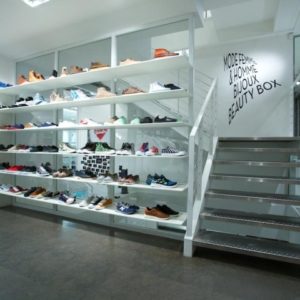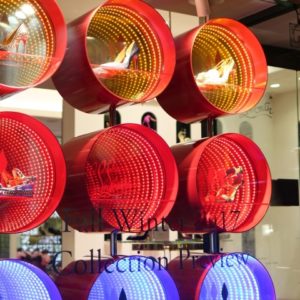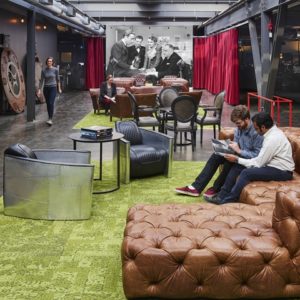


For his first solo exhibition in the USA, Berlin-based architect Diébédo Francis Kéré has created a rainbow-coloured installation made of hundreds of strands of lightweight cord. The site-specific installation, called Colorscape, is on view until 25 September 2016 at the Philadelphia Museum of Art, a leading cultural institution in the US.

It is part of a comprehensive solo exhibition – titled The Architecture of Francis Kéré: Building With Community – that examines the architect’s work in West Africa and beyond through models, photographs, film projections and other items. Kéré grew up in a remote village in Burkina Faso and today runs his eponymous studio in Berlin. He is well-known for creating low-cost, modern buildings in West Africa that are constructed using local materials and labour.

Kéré has also completed a number of projects in Europe, including a Camper pop-up store on the Vitra Campus in Weil am Rhein, Germany, and the Sensing Spaces pavilion in London. In April, he created an installation in Milan modelled after an African village. For an atrium in the Philadelphia art museum, the architect installed a suspended, maze-like structure that consists of thin pieces of coloured cord attached to a steel frame. The string was locally fabricated and references Philadelphia’s legacy as a textiles hub.

Similar to Kére’s building practises in rural Africa, the installation was designed to be built by workers with little or no construction experience. While conceiving the installation’s composition and form, Kéré took cues from two sources: a typical African village, which features meandering paths and clusters of small buildings, and the more structured layout of Philadelphia – planned and developed in the 1600s under the direction of real estate entrepreneur William Penn.

As visitors wander through the maze, they can hear audio recordings of everyday sounds from Burkina Faso and Philadelphia, from the crowing of roosters to the clanking of silverware in a restaurant. The soundscape was produced in collaboration with architecture students from the University of Pennsylvania. Beyond the installation, the art museum has staged a survey of Kéré’s work in an adjacent gallery. A range of material is presented, from clay pots and primitive tools to building models and prototypes.

The exhibition also includes three films that present video clips of life in Kéré’s native village. The Kéré show is part of a larger exhibition at the museum called Creative Africa, which presents an extensive survey of both historic and contemporary art and design from the continent. Five individual shows are on view.
Photography by Tim Tiebout







































